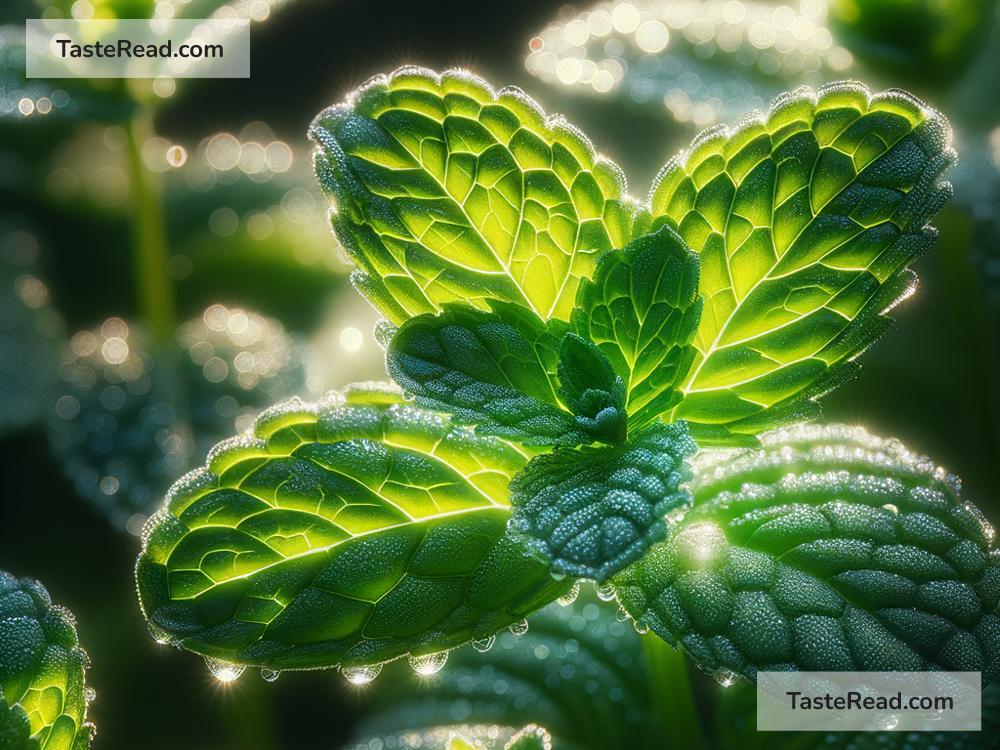The Minty Taste in Herbs: A Closer Look at the Chemicals Behind the Refreshing Flavor
When you think about mint—or even chew gum with a minty flavor—you probably associate that fresh cool sensation with cleanliness and energy. But few people stop to think about what makes herbs like peppermint, spearmint, and others taste minty. The answer lies in chemistry! In this blog post, we’ll take a closer look at the chemical compounds responsible for the minty taste in herbs, explained in easy-to-understand language.
Why Do Herbs Taste Minty?
Herbs such as mint, peppermint, and spearmint are known for their distinct flavor and cooling sensation. This is due to natural chemical compounds produced in the plants. The most important ones are menthol, carvone, and pulegone. These compounds belong to a group of chemicals known as terpenes, which are natural substances made by many plants.
Terpenes help plants in various ways. They can protect plants from pests, assist with pollination, or give them their characteristic aroma. In mint plants, terpenes take the form of menthol and similar compounds, giving them their notable cool, refreshing taste.
Menthol: The Superstar of Mint
Menthol is the most famous compound associated with minty flavors. It’s found in high amounts in peppermint. When you taste something mint-flavored, menthol is often behind it. It doesn’t just taste minty—it also gives that cooling sensation you feel in your mouth or on your skin, making it popular in gum, toothpaste, and even skincare products.
So how does menthol create this cooling effect? It interacts with special nerve receptors in your mouth and skin called TRPM8. These receptors are responsible for detecting cold temperatures. When menthol binds to these receptors, it essentially “tricks” your brain into feeling cold, even though the temperature hasn’t changed. That’s why mint feels refreshing—it’s your brain being fooled!
Apart from its flavor, menthol has additional effects. It can soothe sore throats, relax nasal passages, or even serve as mild pain relief. No wonder it’s so popular in medicines and remedies!
Other Minty Compounds: Carvone and Pulegone
Menthol isn’t the only compound contributing to minty flavors. Other terpenes, like carvone and pulegone, play roles too.
Carvone
Carvone is most associated with spearmint, another variety of mint. Unlike menthol, carvone doesn’t create the cooling sensation, but it gives spearmint its sweet, smooth minty aroma and flavor. You’ll notice carvone’s flavor is more delicate compared to peppermint. That’s why products with spearmint—like gum or tea—taste milder and less intense than peppermint-flavored ones.
Interestingly, carvone doesn’t only appear in mint plants. A slightly different version of carvone can be found in caraway seeds and dill, giving them their distinct savory flavors.
Pulegone
Pulegone is another compound found in mint plants, though in smaller amounts compared to menthol and carvone. It’s responsible for adding more depth and complexity to the minty flavor. However, pulegone also has a stronger and almost medicinal taste, so it’s less prevalent in commercial mint products.
How Are Mint Compounds Used?
Beyond cooking, the compounds responsible for mint’s flavor—like menthol, carvone, and pulegone—are used widely in products we encounter every day.
-
Food and Drinks: Mint-flavored candies, gum, chocolate, teas, and desserts often rely on menthol and carvone to create their taste. Even cocktails, like mojitos, can have mint leaves that release their refreshing compounds when muddled.
-
Toothpaste and Mouthwash: The cooling and odor-fighting properties of menthol make it perfect for oral hygiene products. Not only does it freshen your breath, it also leaves your mouth feeling clean.
-
Medicine: Menthol is often added to cough syrups, lozenges, and balms because of its soothing effects on sore throats and irritated skin.
-
Skincare: Mint compounds are used in creams, rubs, and shampoos to create a tingling, cooling effect that feels relieving.
-
Aromatherapy: Mint essential oils are popular in aromatherapy for their energizing scent and ability to promote focus and relaxation at the same time.
Fun Facts About Mint and Its Flavor
- The mint family includes hundreds of species, such as peppermint, spearmint, and even herbs like oregano and thyme (though these herbs don’t taste minty).
- Mint was historically used in medicine and rituals by the ancient Egyptians, Greeks, and Romans.
- The fresh taste of mint pairs well with sweeter flavors, like chocolate, which is why peppermint chocolate candies are so popular.
Why the World Loves Mint
Minty flavors are loved globally because they don’t just taste good—they feel good. Whether it’s menthol giving you a brain-fooling cool sensation, or carvone providing a mild sweetness, the unique chemistry of mint plants has made them a staple in nearly every household.
So, the next time you chew mint gum or sip on peppermint tea, take a moment to appreciate the amazing chemistry behind that fresh, cool taste. It’s not magic—it’s science! And it’s all thanks to compounds like menthol, carvone, and pulegone working together in perfect harmony.
Now you know why mint tastes the way it does!


